I am making a rectifier for a single N-Scale train building. It takes DC, but the train controller gives out 19VAC. I have 4 1N4001s and some capacitors, but probably not the right size/uf. I only need to make the 19VAC into 19VDC for this one model. I do not know its current draw however.
Asked
Active
Viewed 187 times
0
-
This is the building: http://www.patstrains.com/View_Details/?ID=11220 – Troy Osborne Feb 10 '19 at 01:46
-
1An appropriate capacitor can't be chosen without some idea of the required current. Do you not have a multimeter to measure the current? In any case you aren't getting 19VDC with this setup, you'll need more components. – Feb 10 '19 at 02:10
-
What is being powered? If it's just incandescent bulbs, it doesn't need to be DC at all. If it's LEDs with current-limit resistors, then you can power it with un-filtered DC. If it's more complicated, then the situation is more complicated. – TimWescott Feb 10 '19 at 02:11
-
I do not have a power source to test with, and it is a LED but I do not know if any resistors are with it. I could make a source with 2x 9V batteries if needed. – Troy Osborne Feb 10 '19 at 02:12
1 Answers
1
using Q = C *V, take the derivative with respect to Time, and get
dQ/dT = C * dV/dT + dC/dT * V
Now define dV/dT to be zero (the capacitance is constant), and we have the useful ripple prediction formula
dQ/dT = C *dV/dT
Now define dQ/dT to be the current (I) and we have
I= C * dV/dT
So what? Let I = 1 ampere, dV = 1 volt, dT = 1/(2*50Hertz) = 0.01 second
What must the smoothing capacitor be?
1 amp = C_farads * 1 / 0.01
and we have
1= C* 100,
or
C= 1/100 or 10,000uF
=========================================================
Example with ONE UF and 1 AMPERE load:

simulate this circuit – Schematic created using CircuitLab
analogsystemsrf
- 33,703
- 2
- 18
- 46
-
That is a very conservative answer. High performance audio amps use about 2,000uF per amp of current consumed, on both + and - supply rails. A 1,500 watt RMS mono-block has +/- 120 volt rails with 15 amp fuses. Current peaks are about 10 amps, which calls for a 100,000uF cap. IRL they use 20,000uF caps. +1 – Feb 10 '19 at 03:24
-
@ Sparky256 They may also use cascaded output-emitter-follower_plus_cascade, so the Early Voltage of the emitter-follower does not produce120Hz hum in the speaker. And they make be depending on the low-frequency gain of the servo-loop to push the hum way down. To avoid the "singing" of rectifier surges --- each looking like a wide-band impulse ---- they can install 1uH inductors in series with each rectifier diode. Assuming 100 amps peak thru the diodes, turning on in 10US, we have V = L * dI/dT, or V = 1uH * 100 amps/10uS = TEN volts across the 1Uh. And that 10 volts will SLOW down surges. – analogsystemsrf Feb 10 '19 at 03:36
-
@analogsystemsrf - Can you explain `dT = 1/(2*50Hertz) = 0.01 second` ? – Troy Osborne Feb 13 '19 at 21:45
-
@analogsystemsrf - Please correct me: `.500mA = C * 19VAC/1/(2*60Hz)` `.500 = C * (19/0.008333)` `.500 = C * 2280` and this is where I am bad at math... – Troy Osborne Feb 13 '19 at 21:52
-
At 60Hz recharge rate, a 1Amp current will cause 1 volt sag if the capacitor is 8300 uF. Does that match your math? If your transformer produces 19VAC RMS, or about 30 volts peak, (60 volts Peak_Peak, ), and you take that peak of 30 volts, and allow only ONE volt of ripple, what do you get? – analogsystemsrf Feb 14 '19 at 17:27